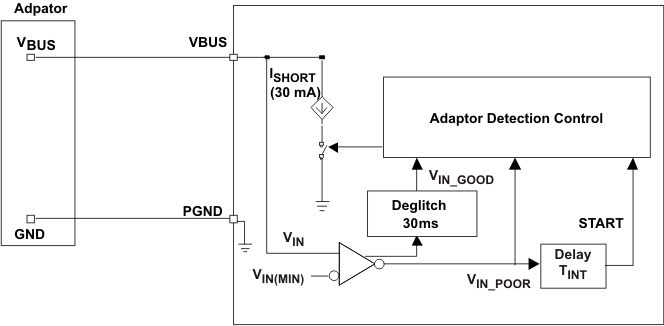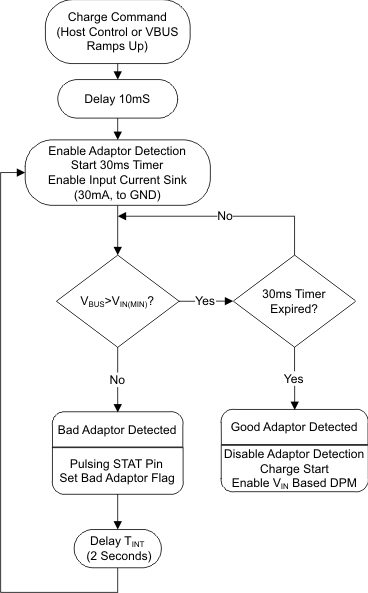JAJSEC4E September 2012 – January 2018
PRODUCTION DATA.
- 1 特長
- 2 アプリケーション
- 3 概要
- 4 改訂履歴
- 5 概要(続き)
- 6 Device Comparisons
- 7 Pin Configuration and Functions
- 8 Specifications
-
9 Detailed Description
- 9.1 Overview
- 9.2 Functional Block Diagrams
- 9.3 Operational Flow Chart
- 9.4 Feature Description
- 9.5 Device Functional Modes
- 9.6 Programming
- 9.7 Register Description
- 10Application and Implementation
- 11Power Supply Recommendations
- 12Layout
- 13デバイスおよびドキュメントのサポート
- 14メカニカル、パッケージ、および注文情報
9.4.1.2 Bad Adaptor Detection/Rejection
Although not shown in Figure 14, at power-on-reset (POR) of VBUS, the IC performs the bad adaptor detection by applying a current sink to VBUS. If the VBUS is higher than VIN(MIN) for 30ms, the adaptor is good and the charge process begins. Otherwise, if the VBUS drops below VIN(MIN), a bad adaptor is detected. Then, the IC disables the current sink, sends a send fault pulse in FAULT pin and sets the bad adaptor flag (B2 - B0 = 011 for Register 00H). After a delay of TINT, the IC repeats the adaptor detection process, as shown in Figure 15 and Figure 16.
 Figure 15. Bad Adaptor Detection Circuit
Figure 15. Bad Adaptor Detection Circuit Figure 16. Bad Adaptor Detection Scheme Flow Chart
Figure 16. Bad Adaptor Detection Scheme Flow Chart